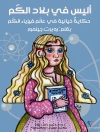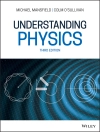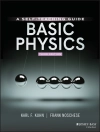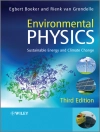Dutch scientist Christiaan Huygens (1629-1695) left an indelible mark on the fields of mathematics, physics, astronomy, and geophysics. Despite his groundbreaking contributions, history has often overlooked his pivotal role. While two of the most famous achievements in physics are Newton’s theory of gravity and Einstein’s general theory of relativity, less well-known is that Huygens provided central elements to these theories. This book stands to correct that deficit. For example, we show how Huygens used symmetry arguments to derive conservation laws for momentum and for energy, and what Einstein later called the principle of equivalence to derive the formula for centrifugal force.
In 1689, Huygens visited Newton. Together, they walked the streets of London. Newton had recently finished his masterpiece, Principia, expounding his laws of motion and the law of universal gravitation. Huygens had essentially completed his life’s work by then, building on Archimedes, Leonardo da Vinci, Galileo, Descartes, Fermat, Pascal and his own ingenuity. He had established fame as an instrument maker (telescope, pendulum clock, planetarium). He had invented the 31 tone system. He had pioneered the first principles of remote sensing. He had discovered the rings of Saturn. He had formulated the wave theory of light. What would walking with Christiaan reveal? This book gives the result in nine chapters, namely: spontaneous order, the speed of light, Huygens’ principle, the telescope, the pendulum clock, Huygens-Fresnel principle, special relativity, centrifugal force, and curvature. In addition, there is a chapter titled What Huygens could have written on diffraction, and a chapter titled Huygens and Geophysics. Mentally walking with Christiaan, browsing his collected works — a true treasure trove for puzzle enthusiasts — and rethinking his ideas creates a vivid impression of scientific life in the 17th century, an appreciation that it is remarkably similar to ours, and an understanding of Huygens’ significant and lasting contributions to science.
Inhoudsopgave
1. Introduction.- Chapter 1. Historical overview of the life of Christiaan Huygens.- Chapter 2. Huygens and spontaneous order.- Chapter 3. Huygens and the speed of light.- Chapter 4. Huygens’ principle.- Chapter 5. Huygens and the telescope.- Chapter 6. Huygens and the clock.- Chapter 7. Huygens-Fresnel principle.- Chapter 8. Huygens and special relativity.- Chapter 9. Huygens and centrifugal force.- Chapter 10 Huygens and curvature.- Chapter 11. What Huygens could have written on diffraction.- Chapter 12. Huygens and geophysics.
Over de auteur
Tijmen Jan Moser received his Ph.D. from the University of Utrecht, concentrating on the shortest-path method for seismic ray tracing. He has worked as a geophysical consultant for a number of companies and institutes, including Amoco, Institut Français du Pétrole, Karlsruhe University, Bergen University, Statoil/Hydro, Geophysical Institute of Israel, Fugro-Jason, and Horizon Energy Partners. Moser was an Alexander-von-Humboldt stipendiat 1996– 1997. Since 2005, he has been working independently with SGS-Horizon, Seismik, and many other associations. Based in The Hague, The Netherlands, he is close to the former estate of Christiaan Huygens, whom he considers the greatest geophysicist of all time. Moser’s main interests include seismic imaging, asymptotic methods, seismic reservoir characterization, diffraction, and geothermal exploration. He has authored many influential papers on ray theory and ray methods, Born inversion and modeling, macro-model independent imaging, and diffraction imaging, several of which have received best paper awards, including an Honorary mention in 2005 from SEG and the Eötvös Award in 2007 and 2009 from EAGE. Moser has co-edited two reprint volumes for SEG, Classical and Modern Diffraction Theory and Seismic Diffraction, and teaches courses on diffraction for EAGE and SEG. He co-organizes the APSLIM (Active and Passive Seismics in Laterally Inhomogeneous Media) workshops in the Czech Republic (2015, 2021). He is a member of SEG and the Mathematical Association of America (MAA), an honorary member of EAGE, and Editor-in-Chief of Geophysical Prospecting.
Enders A. Robinson (1930 – December, 2022) was professor emeritus of geophysics at Columbia University in the Maurice Ewing and J. Lamar Worzel Chair. He received a B.S. in mathematics in 1950, an M.S. in economics in 1952, and a Ph.D. in geophysics in 1954, all from Massachusetts Institute of Technology. As a research assistant in the mathematics department at MIT in 1950, Robinson was assigned to seismic research. Paper-and-pencil mathematics on the analytic solution of differential equations was expected. Instead, Robinson digitized the seismic records and processed them on the MIT Whirlwind digital computer. The success of digital signal processing led to the formation of the MIT Geophysical Analysis Group in 1952 with Robinson as director. Almost the entire geophysical exploration industry participated in this digital enterprise. In fact, this effort later would be recognized in the Boston Globe newspaper, which published a special magazine (May 15, 2011) recognizing the 150 most valuable contributions MIT has made in science and technology– #32 was the Geophysical Analysis Group for spurring the “digital revolution” in oil prospecting. In 1965, Robinson and six colleagues formed Digicon, one of the first companies to do commercial digital seismic processing. In 1996, Digicon and Veritas combined to form Veritas DGC, which combined with CGG in 2007. With Sven Treitel, Robinson received the SEG award for best paper in GEOPHYSICS in 1964, the SEG Reginald Fessenden Award in 1969, and the Conrad Schlumberger Award from the European Association of Exploration Geophysicists (EAGE), also in 1969. In 1983, Robinson was made an honorary member of SEG. In 1984, he received the Donald G. Fink Prize Award from the Institute of Electrical and Electronic Engineers (IEEE). In 1988, he was elected to membership in the National Academy of Engineering. He received the SEG Maurice Ewing Medal and the SEG award for best paper in GEOPHYSICS in 2001, the Blaise Pascal Medal for Science and Technology from the European Academy of Sciences in 2003, and the Desiderius Erasmus Award from EAGE in 2010. Robinson is the author of 20 books and the co-author of 13.












